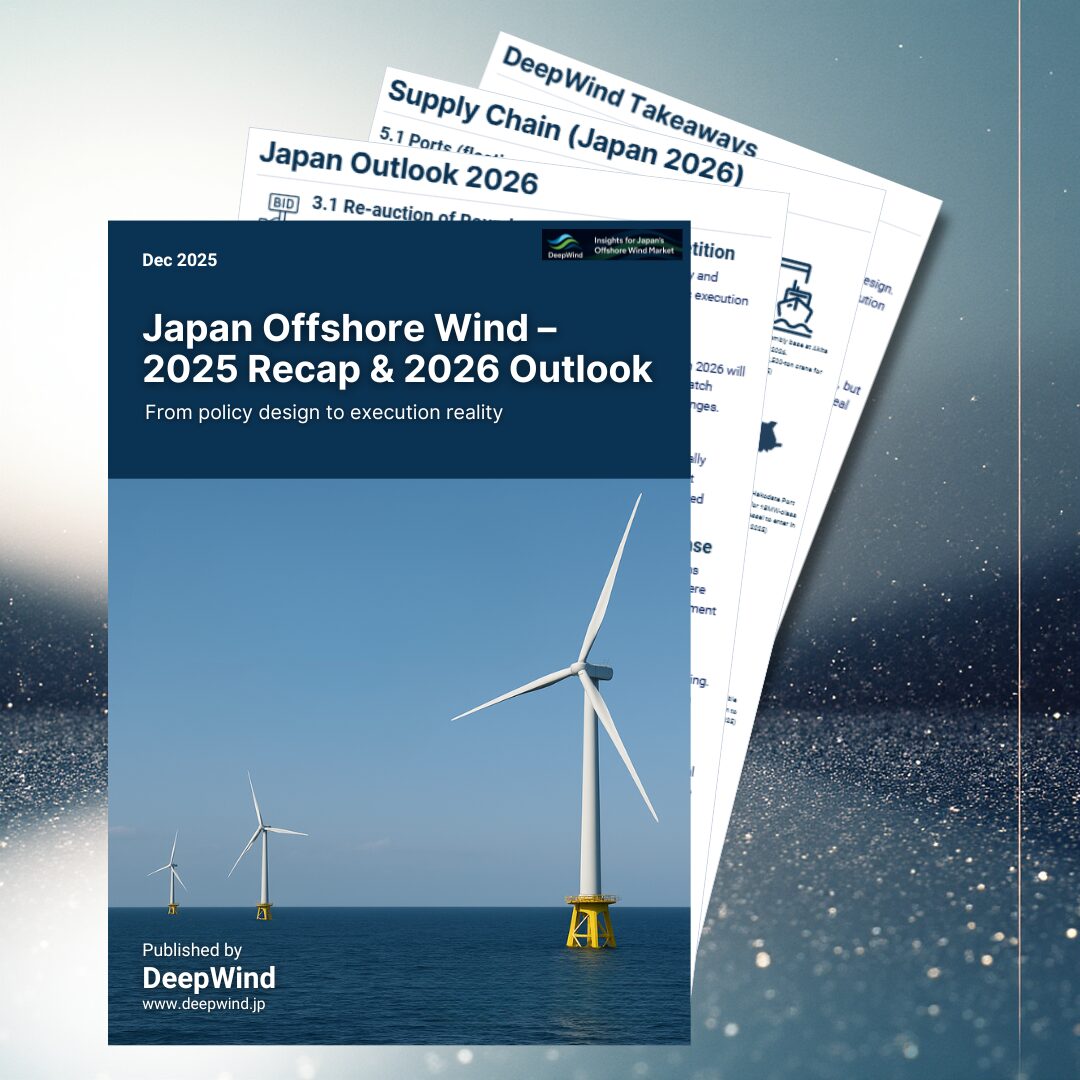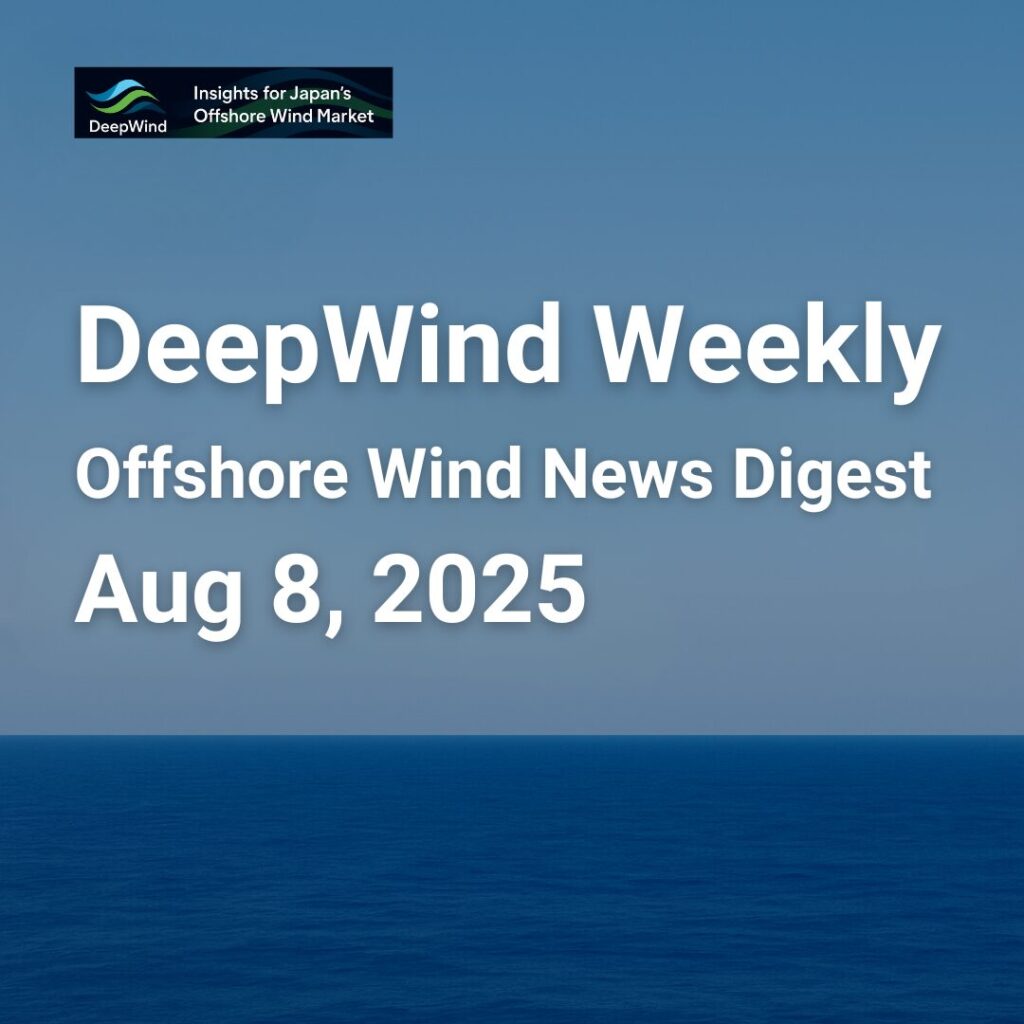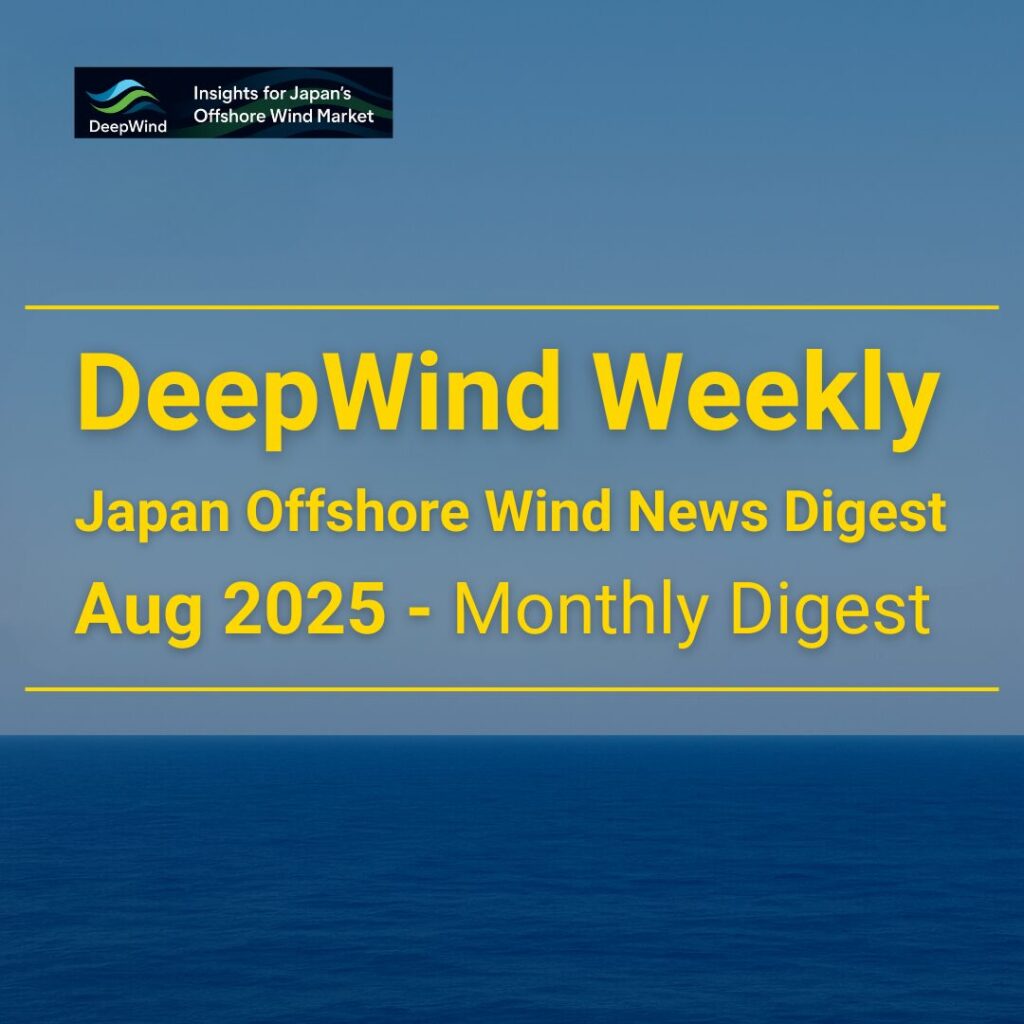This week’s highlights in Japan’s offshore wind sector span a new national floating wind strategy, corporate consolidation, and ecosystem restoration initiatives.
News Highlights
1. Japan’s Floating Offshore Wind Industry Vision (2nd Edition) Released
The Japanese government has unveiled its updated Floating Offshore Wind Industry Vision, positioning floating wind as a core technology for 2040 and beyond.
- Targets: 15 GW of floating projects by 2040, with large-scale pilot projects starting before 2030.
- Industrial Goals: Achieve over 65% domestic procurement by 2040, expand EEZ development under the amended Renewable Energy Sea Area Utilization Act, and foster regional supply chains in Hokkaido, Kyushu, and beyond.
- International Collaboration: Strengthen ties with offshore leaders like the UK, Denmark, and Norway to set standards and promote Asia-Pacific market entry.
- Technological Development: Advance cost reduction, mass production, and automation in floating foundation manufacturing, while bolstering O&M capabilities.
🔗 Read the METI press release (Japanese)
2. Taisei Corporation to Acquire Toyo Construction – Strengthening Offshore Capabilities
On August 8, Taisei Corporation announced plans to acquire Toyo Construction for approximately JPY 160 billion, aiming to make it a wholly owned subsidiary. The move is expected to strengthen collaboration in Carbon Neutral Port (CNP) development and offshore wind construction.
- Synergy Goals: Combine Taisei’s onshore engineering with Toyo’s marine construction expertise to handle larger and more complex offshore projects.
- Market Impact: Anticipated increase in offshore wind project orders, enhanced resource allocation, and higher operational efficiency.
- Strategic Outlook: Overseas expansion leveraging Toyo’s presence in the Philippines, alongside domestic capacity building in renewable infrastructure.
🔗 Read article (Nikkei – Japanese)
3. Offshore Wind Meets Blue Carbon – Seaweed Beds in Nyuzen
Shimizu Corporation is conducting Japan’s first project to create seaweed beds around offshore wind turbine foundations in Nyuzen, Toyama Prefecture.
- Pilot Details: Two of three fixed-bottom turbines (commissioned Oct 2023) were fitted with seaweed cultivation bags. Monitoring in July showed strong growth of species like Sargassum horneri and wakame, with fish schools observed nearby.
- Environmental Role: Seaweed beds act as “blue carbon” sinks, absorbing CO₂ while supporting biodiversity and preventing seabed erosion around turbine bases.
- Broader Goal: Aim for recognition as a “Nature Symbiotic Site” under Japan’s conservation program, integrating renewable energy with marine ecosystem resThis Week
🔗 Read article (Yahoo news – Japanese)
This Week’s Takeaway
- Floating Wind Strategy: Japan sets a 2040 target of 15 GW floating projects, boosts domestic supply chain goals, and expands EEZ development.
- M&A for Offshore Capability: Taisei to acquire Toyo Construction for JPY 160 billion, integrating onshore and marine expertise.
- Blue Carbon Innovation: Shimizu’s seaweed bed pilot in Nyuzen links offshore wind with CO₂ absorption and biodiversity gains.
Japan’s offshore wind sector is accelerating on multiple fronts—policy targets, corporate consolidation, and environmental innovation are converging to define its next growth phase.
Want to see the full picture of this month’s developments?
Check out the “Aug 2025 Monthly Digest” here.
Explore more categories at DeepWind:
- 🔍Market Insights – Understand the latest trends and key topics in Japan’s offshore wind market
- 🏛️Policy & Regulations – Explore Japan’s legal frameworks, auction systems, and designated promotion zones.
- 🌊Projects – Get an overview of offshore wind projects across Japan’s coastal regions.
- 🛠️Technology & Innovation – Discover the latest technologies and innovations shaping Japan’s offshore wind sector.
- 💡Cost Analysis – Dive into Japan-specific LCOE insights and offshore wind cost structures.



